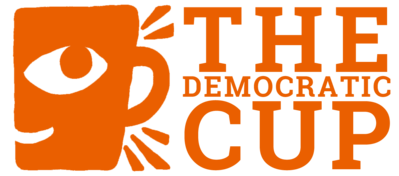37 Steps to Make a Democratic Cup
If you've ever wondered what it takes to make a cup from start to finish, we've outlined the steps in our slipcasting and decal process.
Looking at the list, there are some steps that only need to be done once such as formulating the casting slip, but the majority of steps need full attention and might have sub-steps. We strive to create the most beautifully crafted object that we can based on skill and experience.
Special thanks to The Bright Angle design studio for all their hard work.
Set Up and Mold Making
1) Designers make prototypes
2) Make first working mold
3) Make rubber master mold from first working mold
4) Make multiple working molds from master mold
5) Illustrators make multiple iterations of illustrations
6) Translate illustrations to silver and cobalt decals
7) Have decals screen printed
Making the Cups
8) Formulate a porcelain recipe and glaze recipe that fit
9) Mix powders into casting slip
10) Adjust porcelain slip for proper casting thicknesses for each cup
11) Fill working molds of both handles and cups
12) Wait for proper thicknesses
13) Pump porcelain back into tank
14) Let cups and handles dry to soft leather hard in mold
15) Pull cups and handles from mold
16) Clean handle seams
17) Attach handles
18) Clean up seams
19) Load and
20) Fire bisque kiln
21) Unload kiln
22) Sand and wash bisqueware
23) Mask off unglazed areas
24) Glaze pots
25) Wipe glaze from bottoms and masked areas
26) Load glaze kiln
27) Fire glaze kiln
28) Unload glaze kiln
29) Cut decals from decal sheets
30) Wipe cup surfaces with rubbing alcohol
31) Apply decals and dry
32) Load decal kiln
33) Fire decal kiln
34) Unload decal kiln
35) Sand bottoms
36) Pack
37) Label and Ship


